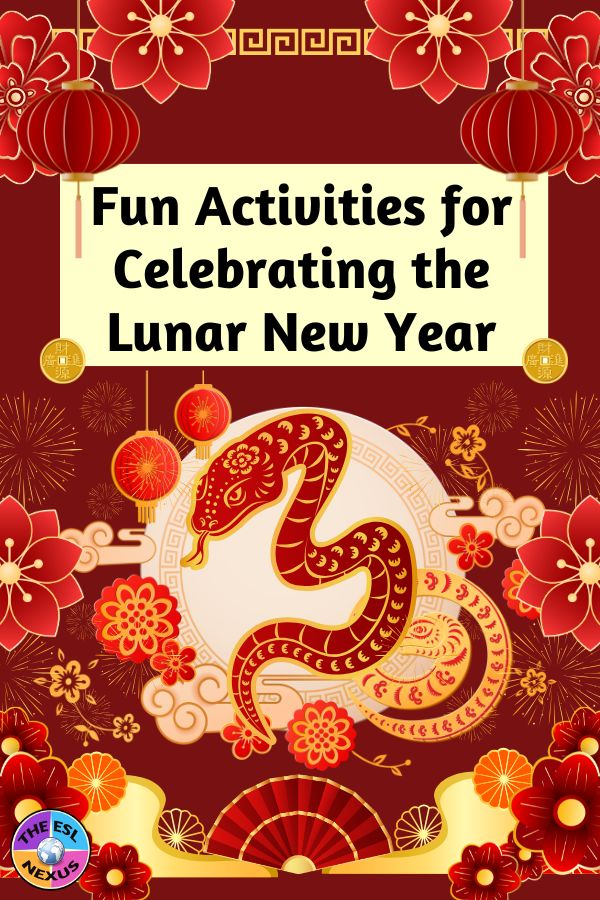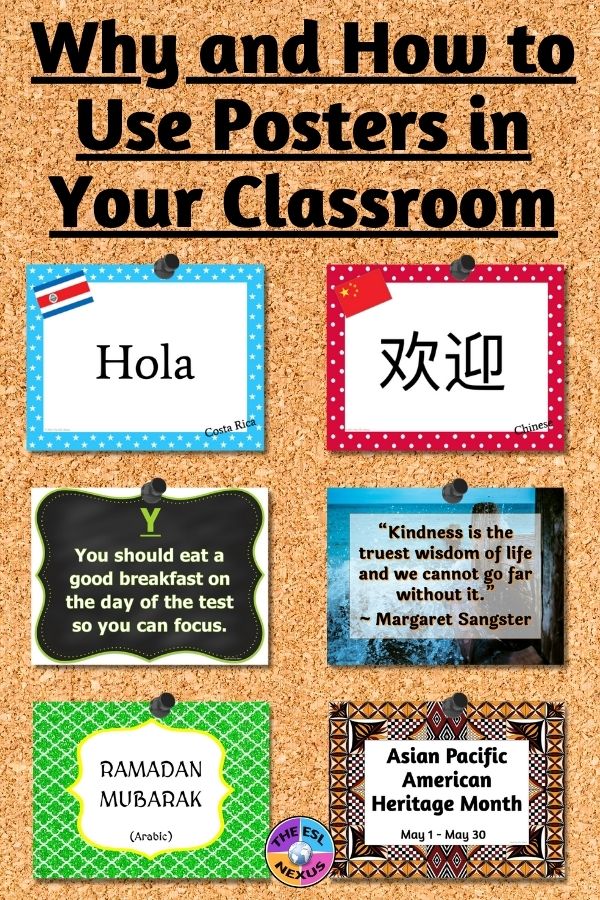My Great Uncle Nat was a veteran of World War II. He was a paratrooper with the 82nd Airborne and served in Europe. Many years later, I made a documentary about his life; most of it is an interview with him about his service during the war. To honor him and all veterans, in this post I’ll share 4 ideas for celebrating Veterans Day that you can implement with your students. (If your students confuse Veterans Day with Memorial Day, another holiday that honors members of the military, my Memorial Day blog post provides some facts about that holiday.)
Ideas for Celebrating Veterans Day
Activity #1: Interview a Veteran
Just as I interviewed my great uncle, you can have your students interview a veteran. Here’s how to do that:
* Tell your students to interview relatives or other people who are
veterans. Tell them they’ll need to take notes because afterwards, they
are going to write short biographies about them. If students don’t have relatives who are veterans or don’t know any veterans, you can ask at a local veterans center to be connected with people who’d be willing to be interviewed.
* Students can start by asking for some background information, such as
birthday and place of birth. Then they can ask about the branch of the
military the veteran served in and what they did. If it seems like it’d
be okay, students can ask if they can take a photo of the veteran they
are interviewing.
* After finishing their interviews, have your students use their notes to
write short biographies of the veterans. If they took photos, they can
be attached to the students’ work. These biographies can be displayed
on a bulletin board as a way of honoring the veterans. And be sure to
send a copy of the biographies to the people interviewed!
As an example:
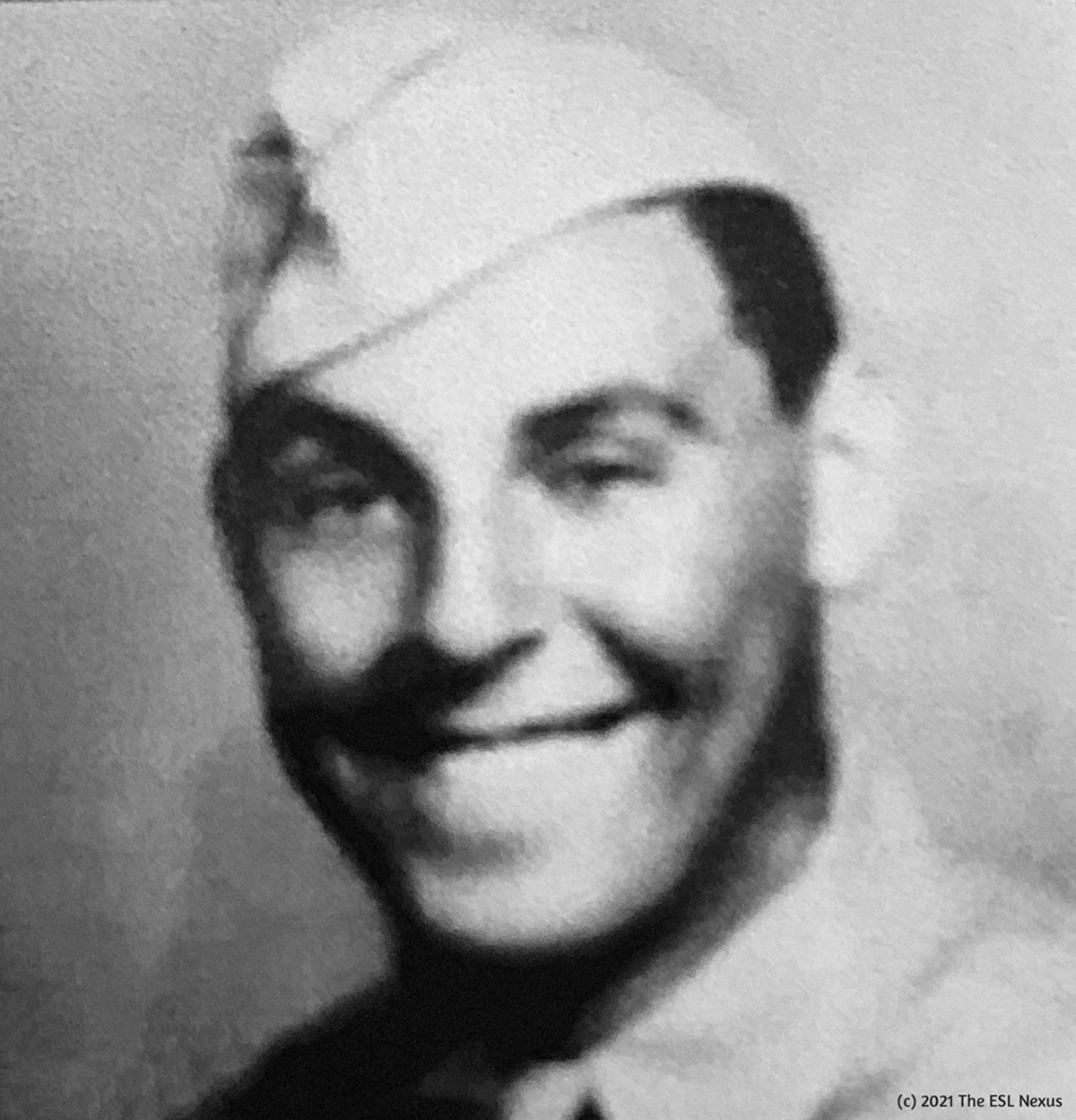 |
| My Great Uncle Nat; source: The ESL Nexus |
I asked my great uncle where he served and when he was in the Army. He told me he participated in Operation Market Garden in the Netherlands in 1944. He added that he was awarded a Purple Heart and the Bronze Star. I asked when he left the Army and he told me he was discharged in 1946. I asked what he did after that and he said he returned to New England, which is where he spent the rest of his life. All of this was included in my documentary, along with additional information. (Sadly, like so many others of that generation, Uncle Nat has passed away. He died in 2007, not long after I made my documentary about him.)
Activity #2: Learn about the Navajo Code Talkers
Have you heard of the Navajo Code Talkers? They were a group of Diné (Navajo) Marine Corps soldiers recruited in World War II who created a code based on their language. The code was used to transmit messages throughout the Pacific theater. The code was never broken by the Japanese and contributed greatly to the Allied victory.
In 2004, when I was visiting the Navajo Nation in Arizona with my parents, we stopped for lunch at a fast-food restaurant in Kayenta. It wasn’t a planned stop but when I saw a sign advertising a museum about the Navajo Code Talkers, I just had to see it. Although it was weird to see a museum in a Burger King, the exhibit itself was fascinating. Since my visit, the museum has moved to a larger, stand-alone building in Tuba City, Arizona.
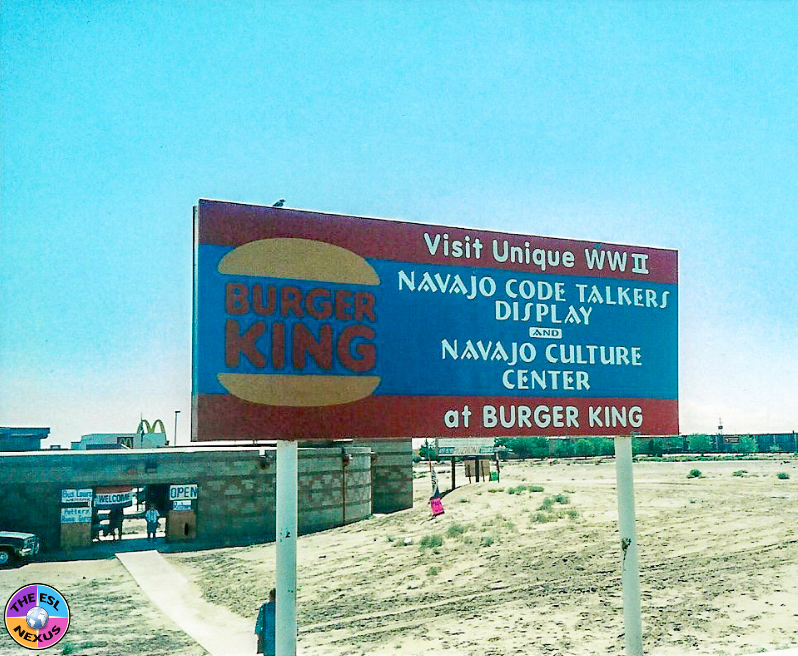 |
| Visiting the former location of the museum; source: The ESL Nexus |
Another idea for celebrating Veterans Day is to watch interviews on this website of some Navajo Code Talkers to learn about their history:
* While watching one or more of the interviews with Navajo Code Talkers, tell your students to take notes on how they introduce themselves and on any other details they think are interesting or important. They should pay particular attention to how they describe what they did in the Army
and what it was like to be a Code Talker.
* Then have your students write short biographies about the Code Talkers. They can work in pairs or small groups, which would be helpful for ELLs and other students who find writing a challenge.
Activity #3: Learn about Other Code Talkers
But the Diné weren’t the only Indigenous people who created codes based on their language. Many others did as well, including First Nations Cree soldiers from Canada who were sent to the U.S. to develop a code based on their language. Not as much has been written about the work of soldiers from other Indigenous groups but just the other day, I came across a short movie about a Cree soldier who helped develop the Cree code. It’s an interview with his surviving brothers and is interspersed with period images from the wartime effort.
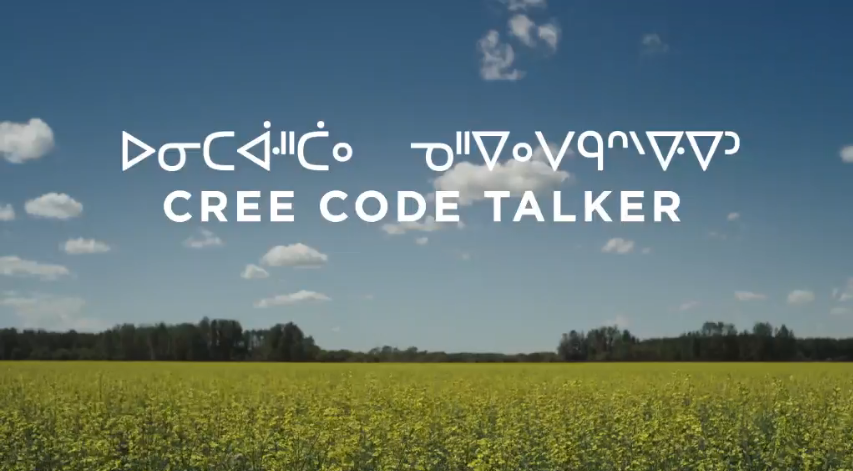 |
| Available through the National Film Institute of Canada; source: NSI Films |
This short movie is a great resource for teaching ELLs and other students about Veterans Day:
* Watch the movie about the Cree Code Talkers. Tell your students to take notes about the background of the veteran who is featured in the movie and what he did during World War II. Have your students pay special attention to how he described the work he and the other Cree Code Talkers did and what it was like serving in the Army.
* Afterwards, ask your students to create timelines or posters about the Cree Code Talkers, or write short paragraphs about them. You can also have them do some research to find about more about the Cree, Navajo, and other Code Talkers.
* If your students also watched some of the videos about the Navajo Code Talkers, they can orally discuss and then write about the similarities and differences between the Navajo and Cree Code Talkers.
* These activities can be done individually, in pairs, or in small groups.
Activity #4: Teach Students Veterans Day Vocabulary Words
Some English Language Learners, especially those new to the U.S, will not be familiar with vocab words about Veterans Day nor will they know how the holiday is celebrated. These Veterans Day activities help you introduce the holiday to your students. Both resources present 20 vocabulary words about Veterans Day in fun and engaging ways. You can use them to explain how the holiday is celebrated:
* Use them as a springboard for discussing the holiday. If you have students who come from other countries, ask how Veterans Day — or Remembrance Day, as it is also known — is celebrated in other countries.
* Use them as a reward for good behavior, with students who finish work early, as homework, or include them in a literacy center.
You can find these 2 resources in my TpT store. Or if you prefer, you can find the Boom deck in my Boom store.
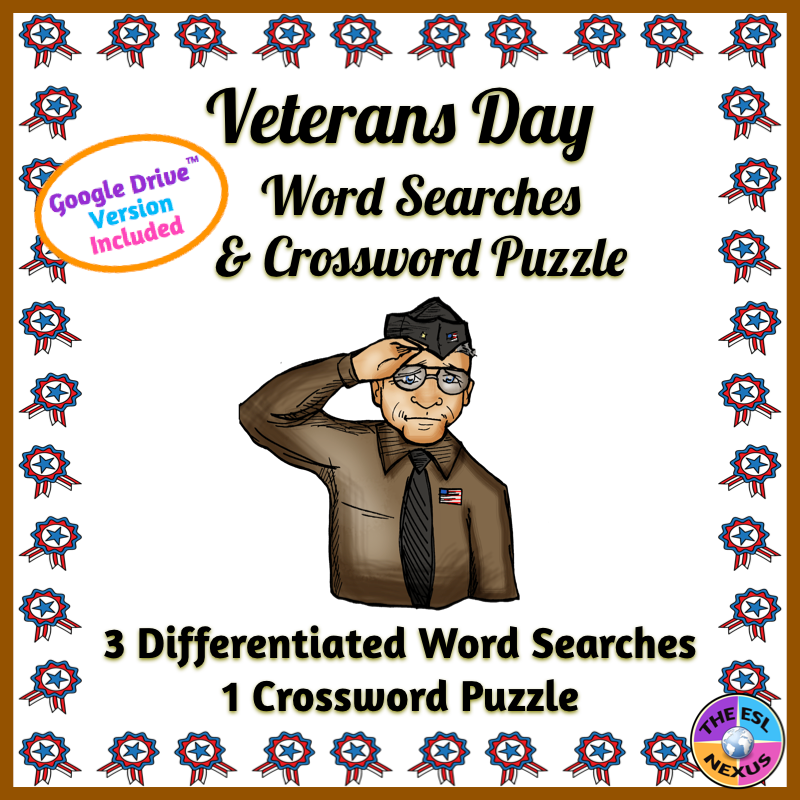 |
| Click HERE for more info; source: The ESL Nexus |
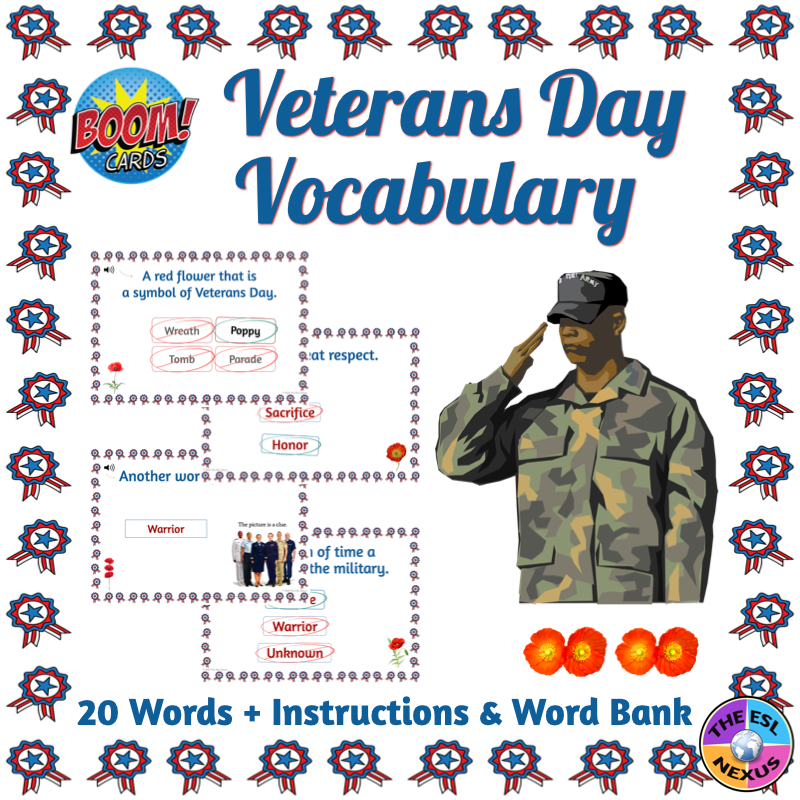 |
| Click HERE for more info; source: The ESL Nexus |

